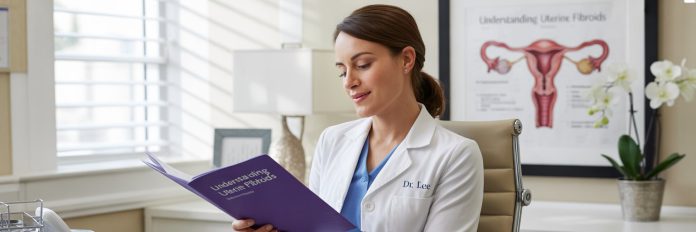Uterine fibroids, also known as leiomyomas, are benign tumors that commonly develop in the uterus. While they are non-cancerous, they can cause a variety of symptoms such as heavy menstrual bleeding, pelvic pain, and fertility issues. The choice of treatment depends on factors such as the patient’s symptoms, age, fertility plans, and the size and location of the fibroids. Gynecologists may recommend different surgical procedures to address uterine fibroids, each with its own benefits, risks, and recovery considerations. Below is a detailed overview of the surgical options available for uterine fibroids, their associated risks, and the costs of these procedures in Hong Kong.
1. Myomectomy (Fibroid Removal Surgery)
Myomectomy is a surgical procedure aimed at removing fibroids while preserving the uterus. It is often recommended for women who wish to maintain their fertility. There are several types of myomectomy procedures, depending on the size, number, and location of the fibroids:
A. LAPAROSCOPIC MYOMECTOMY
* Procedure: This minimally invasive surgery involves making 3-4 small incisions in the abdomen. A laparoscope (a thin, lighted tube with a camera) and surgical instruments are inserted through these incisions to remove the fibroids.
* Suitability: Ideal for patients with smaller or fewer fibroids.
* Advantages: Faster recovery, smaller scars, and less postoperative pain compared to traditional open surgery.
* Risks: Potential for significant blood loss, especially if the fibroids are large. There is also a risk of damage to nearby organs such as the bladder or intestines.
B. HYSTEROSCOPIC MYOMECTOMY
* Procedure: This technique is used for fibroids located inside the uterine cavity (submucosal fibroids). A hysteroscope is inserted through the vagina and cervix to access and remove the fibroids.
* Suitability: Best for submucosal fibroids that protrude into the uterine cavity.
* Advantages: Minimally invasive, no abdominal incisions, and quick recovery. It also preserves fertility.
* Risks: Rare complications include uterine perforation or infection.
C. SINGLE-PORT LAPAROSCOPIC MYOMECTOMY
* Procedure: A single incision is made near the navel, through which a laparoscope and surgical instruments are inserted. This technique minimizes visible scarring.
* Advantages: Smaller and more discreet scars, reduced impact on physical appearance.
* Risks: Similar to laparoscopic myomectomy, including potential blood loss and organ damage.
POST-SURGERY CONSIDERATIONS:
* Women who undergo myomectomy may need to deliver via cesarean section in future pregnancies to reduce the risk of uterine rupture.
* Recovery time varies depending on the surgical approach, with minimally invasive methods requiring less downtime.
2. Hysterectomy (Uterus Removal Surgery)
Hysterectomy is the complete removal of the uterus and is often recommended for women who no longer wish to have children or when fibroids are large, numerous, or causing severe symptoms. There are two main approaches to hysterectomy:
A. TRADITIONAL OPEN SURGERY
* Procedure: A large incision is made in the abdomen to remove the uterus.
* Suitability: Best for patients with large or multiple fibroids.
* Advantages: Effective in completely eliminating fibroids and preventing recurrence.
* Risks: Longer recovery time, larger scars, and higher risk of complications such as infection or blood clots.
B. LAPAROSCOPIC HYSTERECTOMY
* Procedure: Similar to laparoscopic myomectomy, this minimally invasive technique involves small incisions in the abdomen.
* Advantages: Shorter recovery time, smaller scars, and less postoperative pain compared to open surgery.
* Risks: Potential complications include damage to nearby organs and anesthesia-related issues.
EMOTIONAL AND PSYCHOLOGICAL IMPACT:
* Some women may experience emotional distress or a sense of loss after a hysterectomy, especially if they had hoped to have children in the future. Counseling and support groups can help address these feelings.
3. High-Intensity Focused Ultrasound (HIFU)
HIFU is a non-invasive treatment option that uses focused ultrasound waves to generate heat and destroy fibroid tissue.
* Procedure: Ultrasound waves are directed at the fibroid from outside the body, causing the fibroid cells to break down.
* Advantages: No incisions, no visible scars, and a short recovery period. It is a suitable option for patients who prefer non-surgical treatments.
* Risks: Heat damage to surrounding tissues or organs is a potential risk. Additionally, HIFU does not allow for a pathological examination of the fibroid tissue, making it unsuitable for patients with suspected malignancy.
4. Uterine Artery Embolization (UAE)
UAE is a minimally invasive procedure that reduces the blood supply to the fibroids, causing them to shrink over time.
* Procedure: A catheter is inserted into the femoral artery (in the groin area) and guided to the uterine arteries. Tiny particles are injected to block the blood flow to the fibroids.
* Advantages: Preserves the uterus and is a good option for patients who are not candidates for surgery.
* Risks: Potential complications include pelvic infection, pain, and, in rare cases, damage to the ovaries, which may affect fertility.

Cost of Uterine Fibroid Treatments in Hong Kong
The cost of uterine fibroid treatments in Hong Kong varies depending on the type of procedure, the hospital (public or private), and the surgeon’s fees. Below is an approximate cost range for each procedure:
Type of Procedure
Procedure Cost Range (HK$)
Remarks
Hysteroscopic Myomectomy
$2,000 – $3,000
Suitable for submucosal fibroids
Laparoscopic Myomectomy
$5,000 – $7,000
Minimally invasive, faster recovery
Traditional Open Surgery
$15,000 – $16,000
Larger incision, suitable for large fibroids
High-Intensity Focused Ultrasound (HIFU)
$46,000 – $170,300
Private hospitals, all-inclusive packages.
Uterine Artery Embolization (UAE)
$37,800 – $48,850
Public hospital fees
Choosing the Right Treatment
Selecting the most appropriate treatment for uterine fibroids requires careful consideration of several factors, including:
* Age: Younger women may prefer fertility-preserving options such as myomectomy or UAE.
* Fertility Plans: Women who wish to conceive in the future should avoid hysterectomy and consider minimally invasive options.
* Fibroid Characteristics: The size, number, and location of the fibroids play a crucial role in determining the best treatment approach.
* Economic Factors: The cost of treatment can vary significantly, and patients should discuss their budget and insurance coverage with their healthcare provider.
Conclusion
Uterine fibroids are a common condition that can significantly impact a woman’s quality of life. Fortunately, there are multiple surgical and non-surgical treatment options available, each with its own benefits and risks. Patients are encouraged to have an open and thorough discussion with their gynecologist to understand the pros and cons of each procedure and make an informed decision. Post-treatment recovery and follow-up care are equally important to ensure optimal outcomes and prevent complications.




